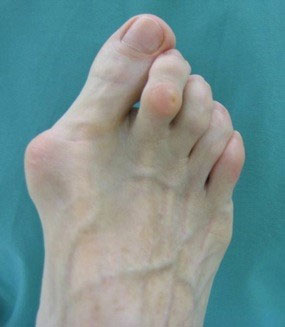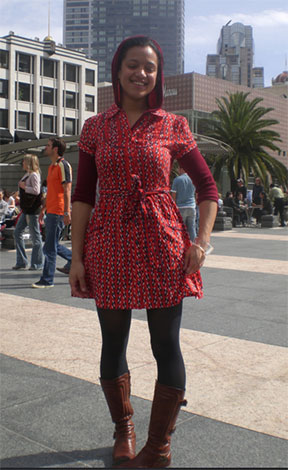Valgus and Varus Alignments in the Lower Extremity
- Whitney Lowe
Introduction
As massage therapists, we must recognize postural and positional alignment issues that are crucial for effective treatment. Among the key concepts in postural assessment are the principles of valgus and varus alignments. Yet, they are frequently misunderstood. These terms describe specific deviations in bony segments that can significantly impact a client’s biomechanics, pain patterns, and overall function.
Understanding valgus and varus alignments is vital for several reasons:
- Accurate Assessment: Recognizing these alignment patterns allows a more precise evaluation of a client’s postural issues and potential sources of pain or dysfunction.
- Targeted Treatment: Knowledge of valgus and varus alignments enables therapists to develop more focused and effective treatment plans.
- Injury Prevention: By identifying and addressing these alignment issues, therapists may help clients prevent future injuries and chronic pain conditions.
- Client Education: Understanding these concepts empowers therapists to educate clients about their body mechanics, fostering better self-awareness and promoting long-term wellness.
- Interdisciplinary Communication: Familiarity with these terms enhances communication with other healthcare professionals, facilitating more comprehensive care for clients.
This article aims to demystify the concepts of valgus and varus alignments by providing clear definitions, familiar examples, and their implications for body mechanics and client health. Massage therapists can elevate their practice by mastering these concepts, offering more insightful assessments and targeted treatments to improve their clients’ overall well-being.
Definitions
Before delving into specific examples and implications of valgus and varus alignments, it’s crucial to establish clear definitions of these terms. These foundational concepts will serve as the basis for understanding more complex postural patterns and their effects on the body.
Varus Angulation: The distal portion of a bony segment deviates in a medial direction.
Valgus Angulation: The distal portion of a bony segment deviates in a lateral direction.
Understanding these terms is essential for accurately describing and assessing postural deviations in various parts of the body, not just the knee, as is commonly misunderstood.
Common Examples
While valgus and varus alignments can occur throughout the body, they are particularly prevalent and significant in the lower extremities. This prevalence is due to several factors: the lower extremity bears the body’s weight, undergoes repetitive stress during locomotion, and is subject to the influences of footwear and walking surfaces. Furthermore, the complex interplay of joints in the lower limb – from the hip to the ankle and foot – means that misalignments in one area can have far-reaching effects on overall posture and movement patterns. For massage therapists, understanding these lower extremity alignment issues is crucial, as they often contribute to common complaints such as knee pain, foot problems, and even lower back discomfort. Let’s explore two significant examples of valgus and varus alignments in the lower extremity: hallux valgus and genu varum.
Hallux Valgus
Hallux valgus deformities involve a lateral deviation of the distal region of the big toe (hallux). See the hallux valgus angulation below.

This condition can result from various factors, including:
– Wearing pointed shoes with a narrow toe box
– High heels (hence it is more common in women)
– Other contributing factors (there are some indications that genetics may play a role in some cases)
The formation of hallux valgus is a gradual process that often begins with footwear choices, particularly in women who frequently wear high heels and narrow toe box shoes. When wearing high-heeled shoes, the foot is thrust forward into the toe box of the shoe. If this toe box is narrow and pointed, it crowds the distal end of the hallux (big toe), forcing it to deviate laterally towards the other toes. As the hallux is pushed sideways, it creates a chain reaction of anatomical shifts. When the distal hallux deviates laterally, the distal portion of the first metatarsal head deviates medially. This medial displacement of the metatarsal head results in it pressing outward against the edge of the shoe. Over time, this constant pressure and irritation can lead to the formation of an enlarged and thickened callus, commonly known as a bunion. This progressive deformity alters the alignment of the toe and can significantly impact foot function and comfort.
Implications of Hallux Valgus
- Bunions may become painful and irritated over time.
- The hallux’s altered position affects its ability to:
– Provide forward propulsion during gait push-off
– Prevent excessive inward foot rolling (overpronation)
- These functional changes can lead to other issues, such as:
– Plantar fasciitis
– Shin splints
– Ankle or knee pathologies
Genu Varum (Bow-legs)
When discussing varus and valgus alignments at the knee, it’s crucial to understand that these terms always refer to the position of the tibia and not the femur. This convention can sometimes cause confusion, primarily when visualizing the overall leg alignment. In genu varum, commonly known as “bow legs,” the distal portion of the tibia deviates medially. Conversely, in genu valgum or “knock-knees” (not discussed in detail in this article), the distal portion of the tibia deviates laterally. By consistently referring to the tibia’s position, we maintain clarity in our descriptions and avoid the potential misunderstandings arising from focusing on the femur’s orientation. With this in mind, let’s explore genu varum and its implications for body mechanics and possible dysfunction.
Genu varum, also known as tibial varus, refers to a medial deviation of the distal portion of the tibia (Image 2).

Primary causes of genu varum
– Physiological Development: Mild genu varum is common in infants and young children as part of normal growth. This type of genu varum usually resolves by age 3-4 years.
-Nutritional Deficiencies: Severe vitamin D deficiency leading to rickets can cause genu varum, particularly in developing countries or in cases of malnutrition.
-Genetics: Some individuals have a genetic predisposition to genu varum, which may run in families.
-Blount’s Disease: This growth disorder affects the proximal tibial growth plate, leading to progressive bowing of the legs.
-Osteoarthritis: Degenerative changes in the knee joint, particularly when more severe on the medial side, can lead to or exacerbate genu varum.
-Trauma or Injury: Fractures or injuries to the growth plate in childhood can result in uneven bone growth, potentially causing genu varum.
-Occupational Factors: Certain occupations or activities that place repetitive stress on the medial knee compartment may contribute to the development of genu varum over time.
This postural distortion results in:
- Body weight shifting to the lateral edge of the foot
- Potential development of calcaneal varus
Implications of Genu Varum
Genu varum can significantly affect the entire lower extremity kinetic chain, potentially leading to musculoskeletal issues. As the body weight shifts to the lateral edge of the foot due to the tibial deviation, it increases stress on the lateral ankle ligaments and peroneal muscles. These structures must work harder to maintain stability and proper foot positioning, which can lead to overuse injuries or chronic tension in these areas.
The knee joint itself is also affected by this misalignment. The medial deviation of the tibia results in increased compressive force on the medial meniscus, potentially accelerating wear and tear in this knee region. Furthermore, genu varum may contribute to iliotibial band friction syndrome. The altered leg alignment creates additional tensile stress on the iliotibial band, which runs along the lateral aspect of the thigh and knee. This increased tension can lead to friction and inflammation where the band crosses over the lateral femoral condyle, resulting in the characteristic pain of IT band syndrome. Understanding these implications is crucial for massage therapists, as it allows them to identify potential areas of compensation and stress in clients with genu varum, enabling more targeted and effective treatment strategies.
Challenges in Addressing Postural Distortions
Addressing postural distortions like valgus and varus alignments presents several challenges for massage therapists and other healthcare professionals. One of the primary difficulties lies in the fact that these distortions often develop from deeply ingrained movement patterns that have become habitual over time. These patterns can resist change, requiring consistent, long-term effort to modify.
It’s important to note that not all postural alterations necessitate correction. Many individuals can function without pain or dysfunction despite having what might be considered “non-ideal” alignment. This observation underscores the complexity of the human body and its remarkable ability to adapt. However, when these alterations play a significant role in soft-tissue distress, recognizing their mechanical implications becomes crucial for effective treatment. In many cases, the postural alignment itself may not be problematic until the load or movement repetition significantly increases.
The challenge for therapists lies in discerning when these postural distortions contribute to a client’s symptoms and when they are benign variations in that individual’s anatomy.
By combining assessment skills with knowledge of kinesiology and mechanics, massage therapists can better navigate the complexities of postural distortions and provide more targeted, effective care to their clients.
Learn lots more about valgus and varus alignments and how to address them in your clients in our Orthopedic Medical Massage courses.

